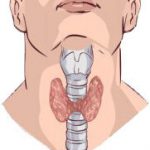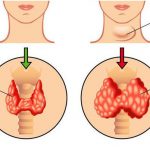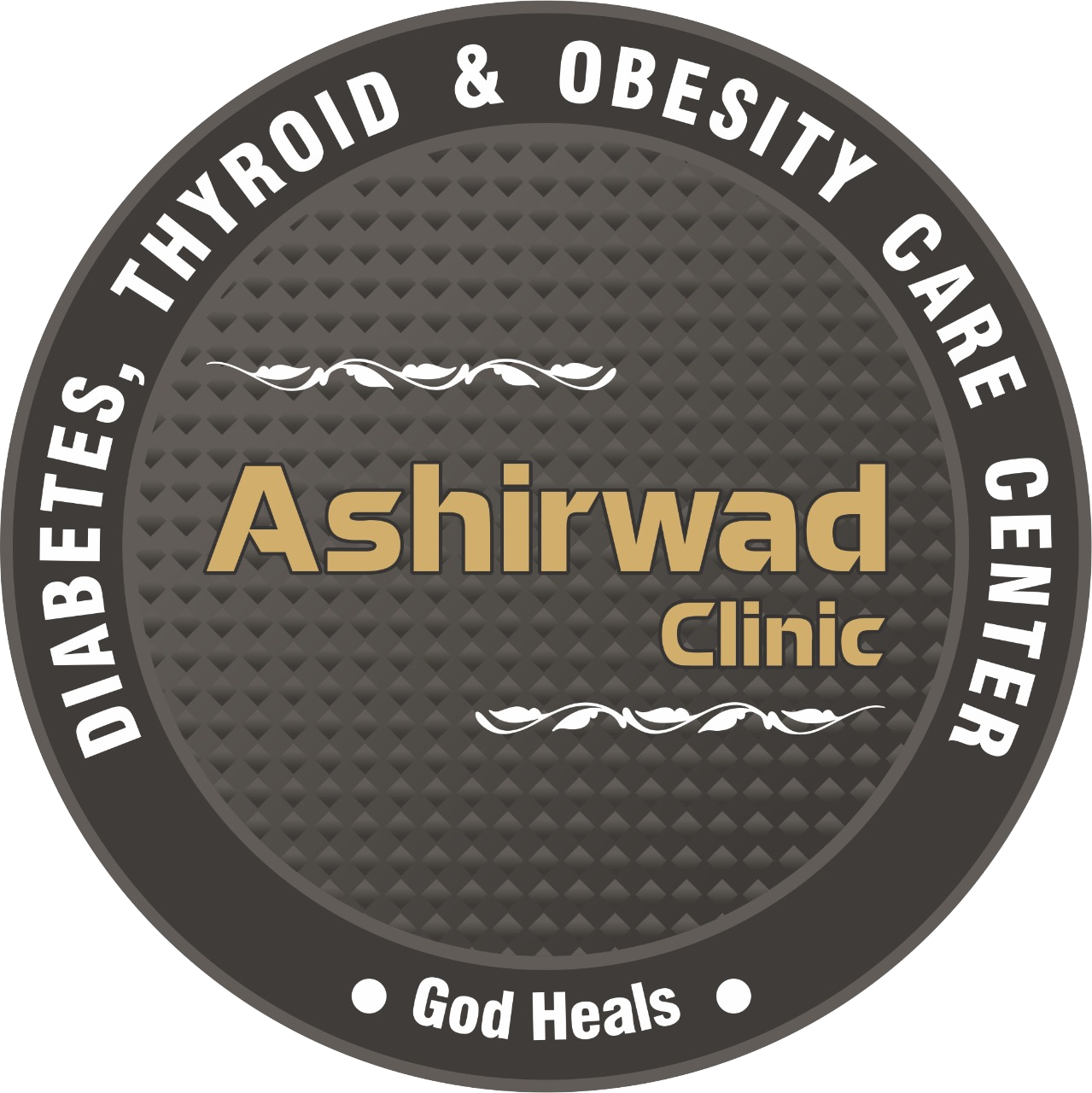FAQ’s
Diabetes
What is diabetes?
Diabetes is a condition in which the level of sugar (glucose) in the blood is high. The body produces insulin, a hormone secreted by the pancreas, which breaks down the sugar consumed in food. A reduction in the production and/or utilization of insulin causes diabetes. If left untreated or uncontrolled, diabetes can lead to serious problems, such as heart disease, stroke, blindness, kidney failure, among others. Some of these may be life threatening.
What is type 1 diabetes?
In type 1 diabetes, the body completely stops producing insulin due to destruction of the insulin-producing pancreatic cells by the body’s immune system. It was previously referred to as juvenile diabetes because it is usually diagnosed in young adults or children, or insulin-dependent diabetes, as insulin therapy is essential for survival and maintenance of good health.
What is type 2 diabetes?
This is the more common form of diabetes, accounting for about 90% of cases. In type 2 diabetes, the pancreas either produces inadequate amounts of insulin, or the body is unable to use the available insulin properly. Type 2 diabetes usually occurs in adults, and is more common in people who are overweight or obese.
What tests can be done to check for diabetes? What are the normal values?
Several tests can be done to estimate the blood sugar level. All these tests estimate the amount of sugar in a certain quantity of blood.
- RPG (random plasma glucose): this is a blood test done at any time of the day to check the blood sugar level at that point in time. If the RPG value is ≥200 mg/ dL(11.1 mmol/L) of blood, it indicates that the person has diabetes.
- FPG (fasting plasma glucose): this tests the amount of sugar in the blood stream after one has not eaten for 8–10 hours (overnight fasting). This is usually done first thing in the morning before breakfast. An FPG value ≥126 mg/dL (≥7.0 mmol/L) indicates that the person has diabetes.
- Glycatedhaemoglobin (HbA1C): this test measures how well the blood sugar has been controlled over the past 3 months. If the HbA1C is ≥6.5% (47.0 mmol/ mol), it indicates the presence of diabetes.
- OGTT (oral glucose tolerance test): this is another type of test for diabetes. The blood sugar level is checked in the fasting state and then 2 hours after drinking a certain amount of glucose. It shows how the body processes glucose. If the 2-hour value is ≥200 mg/dL (11.1 mmol/L), it indicates the presence of diabetes.
What is prediabetes?
Prediabetes is a condition in which the blood glucose levels are higher than normal but not high enough for a diagnosis of diabetes.
Millions of people worldwide do not know that they have prediabetes. That is why it is important to get screened for prediabetes.
If the HbA1C is between 5.7% and 6.4%, or the FPG is more than 110 mg/dL but less than 126 mg/dL, or the OGTT (2-hour glucose test) is between 140 and 199 mg/dL, the condition is termed as prediabetes.
Prediabetic persons may develop type 2 diabetes in later life.
What is insulin resistance?
Insulin resistance is a condition in which the body’s ability to respond to the effects of insulin is decreased. Insulin has many actions within the body, such as the breakdown of carbohydrates (sugars and starches), fats and proteins into glucose. As cells must have glucose to survive, the body compensates for the inadequate response to insulin by producing additional amounts of insulin. This results in high level of insulin in the blood, which is one of the signs of insulin resistance.
What is gestational diabetes?
Gestational diabetes is a temporary type of diabetes that develops during pregnancy (gestation). A woman who had gestational diabetes in one pregnancy has a higher risk of developing gestational diabetes in future pregnancies. Although gestational diabetes reverts to normal after pregnancy, it increases the risk of type 2 diabetes in future.
Who is at high risk for developing gestational diabetes?
There are a number of factors that increase a woman’s chances of developing gestational diabetes. These factors include:
- Being older than 25 years of age.
- Being overweight prior to pregnancy,
- Having a family history of diabetes,• previous history of raised blood glucose level,
- History of repeated abortions or stillbirth or a previous history of delivering a big baby and
- Having poly cystic ovarian syndrome.
- A sedentary lifestyle, hypertension and other cardiovascular diseases also increase the risk of developing gestational diabetes.
- Hence, screening of all pregnant women for diabetes is recommended as a standard protocol.
Who is at risk of developing type 2 diabetes?
certain factors that increase the risk are given below:
- Family history
- Age
- Race
- Overweight/obesity
- Inadequate physical activity
- Unhealthy diet
- High blood pressure or a high lipid. •
- Gestational diabetes
Why does being overweight or obese put one at risk for developing diabetes?
Being overweight can keep the body from producing and utilizing insulin properly. It can also cause high blood pressure. Overweight people are twice as likely to develop type 2 diabetes’s people with normal weight. Losing weight and increasing physical activity reduces the risk of developing this type of diabetes.
What are the common signs and symptoms of type 2 diabetes?
The classical symptoms of diabetes include (3 ‘P’):1
- Frequent urination (polyuria)
- Excessive thirst (polydipsia)
- Excessive hunger (polyphagia)
However not all patients may have these classical symptoms. It is important to understand that diabetes can present any of the following symptoms:
- Unexplained weight loss
- Extreme fatigue
- Frequent infections, especially upper or lower urinary tract infections
- Slow healing of wounds
- Tingling /numbness in hands and feet
- Blurred vision
Why is it important to go for regular check-ups?
The symptoms of type 2 diabetes may be so mild that it may not be noticed for years, and therefore remains untreated. This may lead to complications.
Screening for diabetes is done in a doctor’s office, clinic or laboratory under the supervision of a health-care provider.
High-risk individuals should be screened for diabetes at regular intervals, beginning at the age of 35 years
What are the types of treatment for diabetes?
The aim of treatment is to maintain the blood sugar level as close to normal as possible. The type of food and level of physical activity play an important role in controlling blood sugar, as do medicines
Insulin is mandatory for people with type 1 diabetes.
Type 2 diabetes is usually treated with oral medicines but insulin injections may be prescribed if oral medications do not adequately control the blood sugar level.
Treatment depends on the type of diabetes, complications, presence of other risk factors, coexisting active medical problem, age and general health at the time of diagnosis.
How do patients with diabetes know that their disease is well controlled?
A glycatedhaemoglobin (HbA1c) test accurately assesses how well the blood glucose has been controlled over a period of 2–3 months. For non-diabetic individuals, the normal HbA1c level is usually below 5.5%. In people with diabetes, an HbA1c level below 7.0% indicates good control.
What are the complications and consequences of diabetes?
Short term (Acute) complications are-
- Hypoglycemia
- Hyperglycemia
- Ketoacidosis
- Hyperosmolar hyperglycemia
Long term (chronic) complications are-
- Cardiovascular disease
- Cerebrovascular disease
- Peripheral vascular disease
- Nephropathy
- Nephropathy
- Retinopathy
Can the complications of diabetes be prevented?
The complications of diabetes can be prevented by doing the following important things:
- Take medicines regularly
- Keep a track of the blood sugar level
- Well balanced healthydiet–Stay physically active.
- Stay alert for skin infections and skin disorders
- Regular eye check-ups.
- Watch for any tingling, burning, loss of sensation, and wounds on the bottom of the feet.
- Stress management
Does the diet for those with diabetes differ from that of non-diabetic persons?
The diet for diabetic individuals should be healthy, well balanced and should control the blood sugar level.
A healthy diet comprises complex carbohydrates (whole grain cereal) low in fat and has plenty of green leafy vegetables and fruits. With proper planning, one can still enjoy a wide variety of favorite food.
And follow a structured diet planned by qualified dietitian to achieve your target glucose levels and other health goals.
Why it is important for people with diabetes to be physically active?
Physical activity delays or prevents the onset of type 2 diabetes. Studies have shown that physically active individuals have a 30–50% lower risk of developing type 2 diabetes compared to sedentary individuals.
Physical activity helps to control the blood glucose level, weight and blood pressure, reduce the cholesterol level and prevent cardiovascular disease.
Can diabetes lead to serious emergencies?
Yes, it can lead to serious and life-threatening medical emergencies. These can occur if the blood sugar is too high or too low. Diabetic emergencies are best treated in a hospital as quickly as possible.
What is hypoglycaemia and how can it be prevented and managed?
Hypoglycemia (low blood sugar) is the most common complication seen in individuals with diabetes. The blood sugar level may suddenly become too low for various reasons, including vigorous physical activity, taking the wrong dose of insulin/antidiabetic medicine or not eating enough or eating too late.
It is usually mild and can be treated quickly by eating or drinking something with a high sugar content.
The symptoms of low blood sugar are usually non-specific and patients may feel some discomfort, sweating, palpitations, weakness and giddiness.
If left untreated, it can get worse and lead to confusion or even coma.
What can individuals do?
- Achieve and maintain a healthy body weight.
- Be physically active – at least 30 minutes of regular, moderate-intensity activity on most days. More activity is required for weight control.
- Eat a healthy diet.
- Avoid tobacco use and use of alcohol.
- Manage stress.
- Test the blood glucose and glycatedhaemoglobin levels regularly
Thyroid
What is a Thyroid?
The thyroid (THY-royd) is an organ that produces thyroid hormones (Research has shown that the thyroid plays a key role in the intricate metabolism and weight loss system in our bodies.
 Where is your/my thyroid located?
Where is your/my thyroid located?
 The thyroid gland is located in the front of our necks. Just below the Adam’s apple and above the base of the neck/collarbone area.
The thyroid gland is located in the front of our necks. Just below the Adam’s apple and above the base of the neck/collarbone area.
What does the thyroid do (i.e. what is the thyroid’s function)?
The primarily function of the thyroid is to produce, store, and release thyroid hormones.
Why does my thyroid hurt?
Infections (although rare), thyroid nodules, or swelling due to hypo or hyperthyroidism can cause a thyroid to hurt. It could also be something else in the surrounding neck area.
Why do I have thyroid problems?
The million-dollar question! No one knows for certain. It is likely a combination of factors including diet,genetics, diseases, and things we don’t even know about yet.
What are some symptoms of having thyroid problems?
Fatigue, weight gain (or inability to lose weight), mood swings, hormone imbalances, joint pain, brain fog, and feeling cold when others are not, are some of the most common symptoms of a thyroid problem. The severity of these symptoms depends on the severity of your thyroid problem.
How can I lose weight with a thyroid problem?
It is always possible to push yourself harder, eat less and healthier, and work out harder and more often. However, it is a better idea to fix your thyroid problem at the same time so you can reach your goals even quicker.
What are normal thyroid levels?
‘Normal’ is quite a broad term when describing thyroid levels. Most doctors and ‘experts’ seem to have their own reference ranges, but depend on age, gender, pregnancy, and other factors. The most common ranges are below. See more here about normal thyroid levels:
- Serum thyroxine (T4)
- Free thyroxine fraction (FT4F)
- Free Thyroxine (FT4)
- Free Thyroxine index (FT4I)
- Serum Triiodothyronine (T3)
- Radioactive iodine uptake (RAIU)
- Serum thyrotropin (TSH)
- Serum thyroglobulin l (Tg)
- 5-12 nanograms per deciliter
- 0.03%
- 0.7-1.9 ng/dl
- 4-12 nanograms per deciliter
- 80-180 nanograms per deciliter
- 10-30%
- 0.7-5 uU/ml
- 0-30 ng/m
What is a thyroid test?
A thyroid test is often a blood test that checks the levels of certain hormones – often TSH, T3, T4,
What is hypothyroidism?
Hypothyroidism, also known as an underactive thyroid, occurs when your thyroid does not produce enough thyroid hormones (T3 and/or T4) in the body.
What are symptoms of hypothyroidism?
Fatigue, sensitivity to cold, weight gain, muscle weakness, and hair thinning are some of the most common symptoms of hypothyroidism. The severity of these symptoms depends on the severity of your hypothyroidism.
What is hyperthyroidism?
Hyperthyroidism is an over active thyroid. Your thyroid is producing too many thyroid hormones. It is the opposite of hypothyroidism.
What are symptoms of hyperthyroidism?
Anxiety, nervousness, rapid weight loss, and tremors are some of the symptoms of hyperthyroidism
 What is a thyroid nodule?
What is a thyroid nodule?
 A thyroid nodule is an abnormal growth in the thyroid gland that causes a lump to form. See the picture to the right.
A thyroid nodule is an abnormal growth in the thyroid gland that causes a lump to form. See the picture to the right.
What does an enlarged thyroid mean?
An enlarged thyroid refers to the thyroid gland being abnormally large. It is also referred to as a goiter and can cause swelling in the neck.
What is a goiter?
A goiter is also referred to as an enlarged thyroid. See description above or picture below:


How should I take thyroid medications?
Thyroid medications usually come in the form of pills or capsules. You should take them on an empty stomach about an hour before breakfast or coffee.
What is bad for the thyroid?
Gluten (if you’re sensitive), soy, fatty and sugary foods, and cruciferous vegetables.
Obesity
FAQS ON OBESITY
- WHAT IS OBESITY?
Obesity is defined as a condition with accumulation of excess body fat that may impair health of the individual (WHO).
- WHAT ARE THE CAUSES OF OBESITY?
CAUSES
- Genetic susceptibility
- Dietary habits
- Inadequate physical activity
- Abundance of food
- Psychological factors
- Hormonal imbalance
- Birth weight and childhood growth pattern
- WHAT ARE THE COMPLICATIONS OF OBESITY.
Obesity is associated with many chronic diseases, including Type 2 DM, hypertension, CHD, stroke and several cancers.
- Coronary Artery Diseases
- Osteoarthritis
- Diabetes mellitus and Hyperinsulinemia
- Cancer
- Hepatobiliary disease
- Hyperlipidemia
- Hypertension
- Respiratory Problems
- Gout
- Sleep apnea
- WHAT IS MORBID OBESITY ?
It is a state of adiposity in which body weight is 100% above the ideal body weight; a body mass index of 45 or greater.
- What are the measures for diagnosis of obesity ?
- BMI
- Waist circumference
- Hip and waist ratio
- What is BMI?
BMI (Body Mass Index)
= Weight In Kilogram / Height In Metre²
- What is classification of BMI in Asian adults?
Classification Of Weight Status According To BMI In Asian Adults
|
CLASSIFICATION |
BMI (Kg/m2) |
RISK OF CO-MORBIDITIES |
|
UNDERWEIGHT |
<18.5 |
Low (but risk of other clinical problems increased) |
|
NORMAL |
18.0-22.9 |
Average |
|
OVERWEIGHT |
>23 |
|
|
At Risk |
23.0-24.9 |
Increased |
|
OBESE CLASS 1 |
25.0-29.9 |
Moderate |
|
OBESE CLASS 2 |
>30.0 |
Severe |
- What does childhood obesity affects ?
In children, childhood obesity is associated with a higher chance of obesity, premature death and disability in adulthood. But in addition to increased future risks, obese children experience breathing difficulties, increased risk of fractures, hypertension, early markers of cardiovascular disease, insulin resistance and psychological effects
- How can overweight and obesity be prevented or reduced?
- Whether you’re at risk of becoming obese, currently overweight or at a healthy weight, you can take steps to prevent unhealthy weight gain and related health problems.
- Exercise regularly.
- Eat healthy meals and snacks.
- Know and avoid situations that trigger out-of-control eating.
- Monitor your weight regularly..
- Be consistent.
